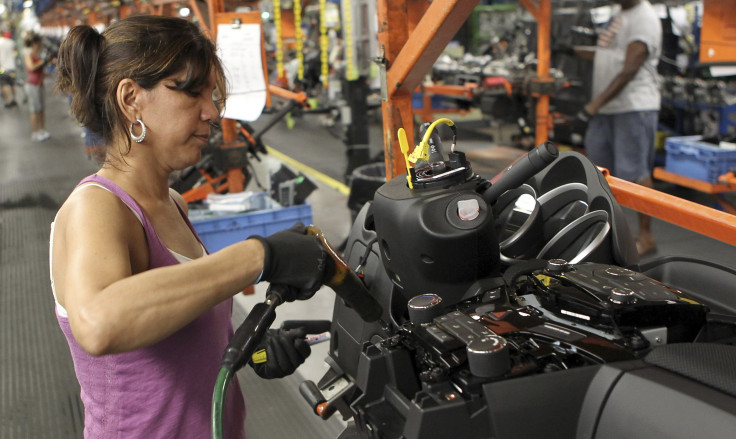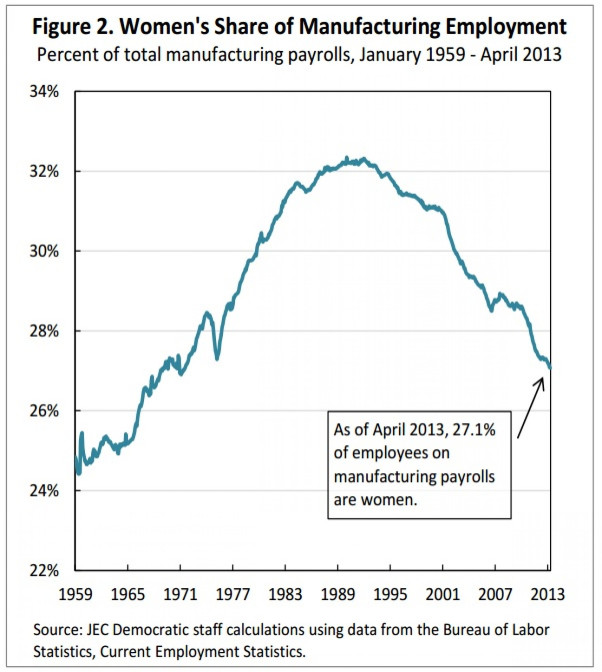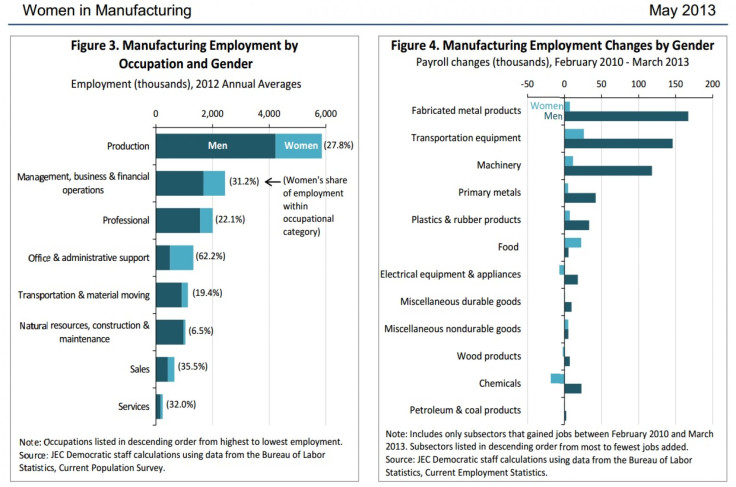Women Not Part Of US Manufacturing Turnaround As Men Gain 554,000 jobs In Last Three Years, But Women lose 11,000

Since February 2010, the U.S. manufacturing industry, which appeared to be in a terminal decline for more than 30 years, has added more than 554,000 jobs to the workforce, according to the Joint Economic Committee of the U.S. Congress.
However, in that same time frame, men have gained 565,000 jobs in the sector and women lost 11,000 jobs, lowering female representation in the sector to 27 percent, the lowest it's been since 1971, according to the Joint Economic Committee's Manufacturing Jobs for the Future report, released Tuesday.

The underrepresentation of women in American manufacturing is also underscored by another recent study. Female participation in the manufacturing sector has been primarily in the office and administration sector, where they hold 62 percent of positions, and sales, where they hold 35 percent of jobs, according to the Women in Manufacturing report released in May 2013. Men, on the other hand, dominate most sectors within the industry, primarily in natural resources, construction and maintenance, where they hold 93.5 percent of the jobs.

In the period of February 2010 to March 2013, women saw small gains in some sectors of the industry, including transportation equipment, machinery, food, and plastics and rubber products, but they saw losses or no movement in industries such as chemicals, where women have lost about 20 percent of jobs, and electrical equipment and appliances, where they experienced small losses.

Barriers into the industry include a lack of technical training for women, but the "Women in Manufacturing" report also says that women are still of the opinion that the manufacturing industry is primarily a male-dominated one and that entry for them is limited because of the physicalities involved.
“Additionally, the long-standing stigma that jobs in manufacturing require difficult physical labor and are only for men no longer holds true,“ the report from Sen. Amy Kobuchar’s (D-Minn.) office said. “Advances in technology have changed the way goods are produced, and many manufacturing jobs now require highly specialized technical skills and little physical labor.”
However, changes could be on the horizon. The rising cost of labor overseas is pushing many companies to return to the United States. For example, the savings on Chinese workers in 2006 was about $17 per hour, but that figure is predicted to shrink to $7 by 2015, making it cost-effective to come back to the United States. Companies such as Caterpillar Inc. (NYSE:CAT), General Electric Company (NYSE:GE) and Ford Motor Company (NYSE:F) have already announced plans to do so, which means the U.S. manufacturing sector could experience a boom over the next few years, but whether or not that boom will include women remains to be seen.
© Copyright IBTimes 2024. All rights reserved.






















